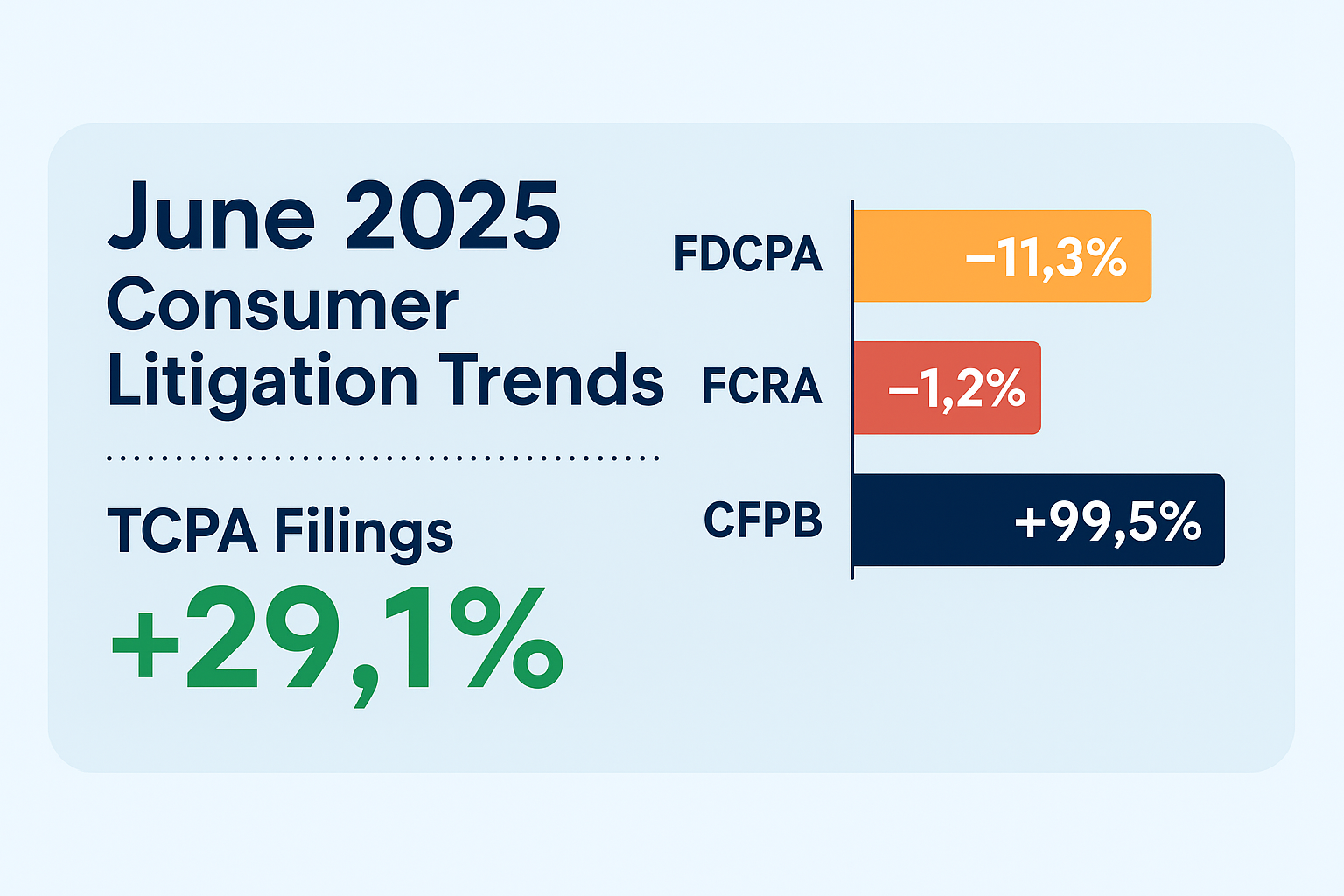March 2024 has marked another noteworthy chapter in the ongoing examination of consumer complaints and litigation across the United States. According to a comprehensive review by WebRecon, this past month continued to exhibit a mixed bag of trends in consumer litigation, although the year-to-date (YTD) figures remain significantly elevated. Let’s dive into the latest data from March 2024, examining the surge in TCPA litigation and its broader implications for both consumers and legal professionals.
March 2024: A Mixed Month for Consumer Complaints
In March 2024, the statistics revealed varying trends across different consumer statutes. The Telephone Consumer Protection Act (TCPA) saw a slight increase of 1.5% in complaints compared to February 2024. Conversely, the Fair Debt Collection Practices Act (FDCPA) and the Fair Credit Reporting Act (FCRA) witnessed decreases of 13.1% and 30.6%, respectively.
Despite the monthly fluctuations, the YTD figures tell a different story. TCPA complaints rose by an impressive 26.6%, FDCPA by 12.9%, and FCRA by a notable 28.4% when compared to the same period last year. This substantial year-over-year increase underscores a growing trend of consumer vigilance and responsiveness to potential violations.
Class Action Lawsuits and Attorney Representation
Class action lawsuits continue to play a significant role in TCPA litigations, accounting for 60.4% of all TCPA lawsuits filed in March. This percentage starkly contrasts with the figures for FDCPA (10%) and FCRA (4.1%), highlighting the particular vehemence found within the realm of telecommunications-related complaints.
The litigation landscape in March also spotlighted the efforts of consumer attorneys. Tampa attorney Octavio Gomez led the field by representing the most consumers in March, with 22 cases. This highlights the critical role attorneys play in shaping the litigation landscape, particularly in addressing repeated grievances from consumers who have previously filed lawsuits.
Detailed Complaint Statistics from March 2024
The Consumer Financial Protection Bureau (CFPB) registered a significant increase in complaints. In March alone, 12,335 CFPB complaints were filed, a 36% rise from February. Additionally, the number of unique plaintiffs in lawsuits amounted to approximately 904, with about 40% of these plaintiffs having previously sued under consumer statutes. This repeated litigation activity suggests a persistent dissatisfaction among consumers regarding how their cases are being handled or resolved.
Geographical and Issue-Specific Trends
The geographical distribution of complaints and lawsuits provides another layer of insight. The top jurisdictions for lawsuits included the Georgia Northern District Court in Atlanta and the Florida Middle District Court in Tampa, among others. This geographic spread indicates widespread issues across various states, with Texas, Florida, and California leading in the number of complaints.
The nature of the complaints varied, with a significant portion (42%) being categorized as “I do not know,” reflecting a concerning level of uncertainty or confusion among consumers regarding the debts being claimed. Issues such as attempts to collect debt not owed and inadequate written notifications about debts were prevalent, comprising 48% and 35% of the complaints, respectively.
Implications and Forward-Looking Perspectives
The mixed trends observed in March 2024, coupled with the substantial increase in YTD numbers, suggest a robust engagement from both consumers and legal advocates in addressing and rectifying consumer grievances. The high percentage of class action suits in the TCPA domain and the repeated litigation by previous plaintiffs underscore the ongoing challenges and complexities in consumer protection law.
As we navigate the complexities of rising TCPA litigation and the prevalence of class actions, it’s crucial for business operators to reassess our risk management strategies. The trend of increased consumer assertiveness and the naming of executives in lawsuits highlights a growing area of liability that requires immediate attention and proactive planning. How are you, as business leaders, adapting to these escalating legal risks to safeguard operations and maintain compliance? What are your strategies for managing these developments, de-risking your day to day operations while balancing the need for continued contact and communication with your B2C and B2B clients?


